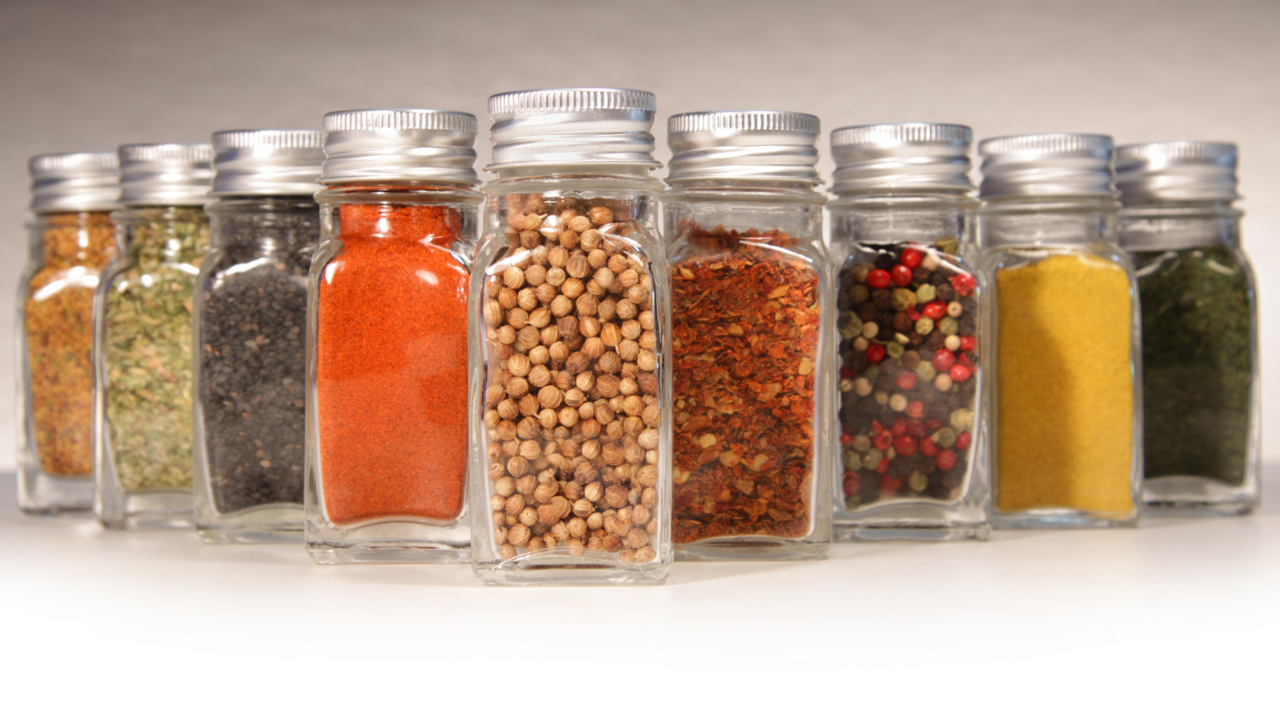Extension for Real Life
Salt-Free Seasonings in 3 Steps

spices.png
Video by Jonathan Parrish
One of the first steps in controlling high blood pressure is to reduce the extra sodium in your diet. Many people think sodium and salt are the same thing, however, they are different. Sodium is a mineral that occurs naturally in foods and is sometimes added during manufacturing. Table salt is a combination of the minerals sodium and chloride.
The American Heart Association recommends no more than 2,300 milligrams (mg) of sodium daily. The ideal amount is no more than 1,500 mg per day for most adults, especially those with high blood pressure. Cutting your daily intake by just 1,000 mg can improve your blood pressure and heart health.
Replace Sodium with Spices and Herbs
Salt-free seasonings add a unique flavor to your dishes without adding extra salt. To incorporate more herbs and spices into your meals, look for seasonings that end in “powder,” like garlic, chili, and onion powders. Our MSU Extension salt-free, spice blend recipes are a great place to start.
You know what they say: “Variety is the spice of life.” In three easy steps, you can add variety and more flavor to your dishes:
Steps
- Wash your hands with soap and water.
- Measure the ingredients into a jar or airtight container.
- Shake, seal, and enjoy!
Homemade spice blends save money and punch up the flavor of your food. Here are a few to get you started. Get all of our salt-free seasoning blend recipe in Extension Publication 3586, “Nutrition and Wellness Salt-Free Spice Blends.” You’ll find our taco seasoning recipe, which is a fan favorite and our most popular.
Greek
1 tablespoon garlic powder
1 tablespoon basil
1 tablespoon oregano
1½ teaspoons black pepper
1½ teaspoons rosemary, minced
1½ teaspoons thyme
¾ teaspoon ground nutmeg
Tip: Use on salads, roasted potatoes or other vegetables, and seafood.
Barbeque
2 tablespoons dried basil
2 tablespoons dried sage
2 tablespoons dried thyme
2 teaspoons black pepper
1½ teaspoons dried savory
½ teaspoon dried lemon peel
Tip: Use on grilled meats and vegetables.
Chili Lime
1 tablespoon ground coriander
1 tablespoon garlic powder
1 teaspoon lime zest
1 teaspoon onion powder
1 teaspoon ground cumin
Tip: Use on chicken, shrimp, grilled meats, and vegetables.
Bonus tip: Don’t know where to start to reduce the extra sodium in your diet? Start by limiting the American Heart Association’s Salty 6. These six common prepackaged, processed, and prepared foods add the most salt to your diet without you realizing it:
- Breads and rolls
- Pizza
- Sandwiches
- Cold meats/cured meats
- Burritos and tacos
- Soup
For more information about high blood pressure and sodium and more tips on how to reduce the sodium in your diet, visit the American Heart Association website.
For more helpful tips like these and healthy recipe options, visit extension.msstate.edu and join our MSU Nutrition and Wellness Facebook group.
Authors
-
 Extension Instructor
Extension Instructor- Central MS Research & Ext Center
Contacts
-
 Extension Instructor
Extension Instructor- Central MS Research & Ext Center